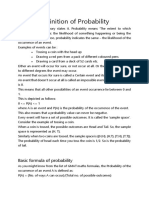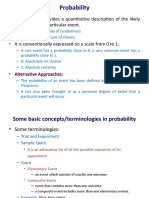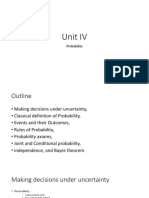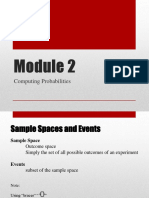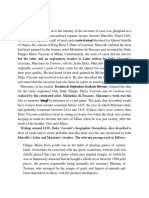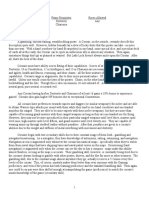0% found this document useful (0 votes)
29 views8 pagesWhat Is Probability
Probability measures how likely an event is to occur, ranging from 0 (impossible) to 1 (certain). Key concepts include experiments, sample spaces, events, and favorable outcomes, with examples like tossing a coin or rolling a die. Types of events include mutually exclusive events, which cannot occur simultaneously, and independent events, where the outcome of one does not affect the other.
Uploaded by
deepaliCopyright
© © All Rights Reserved
We take content rights seriously. If you suspect this is your content, claim it here.
Available Formats
Download as DOCX, PDF, TXT or read online on Scribd
0% found this document useful (0 votes)
29 views8 pagesWhat Is Probability
Probability measures how likely an event is to occur, ranging from 0 (impossible) to 1 (certain). Key concepts include experiments, sample spaces, events, and favorable outcomes, with examples like tossing a coin or rolling a die. Types of events include mutually exclusive events, which cannot occur simultaneously, and independent events, where the outcome of one does not affect the other.
Uploaded by
deepaliCopyright
© © All Rights Reserved
We take content rights seriously. If you suspect this is your content, claim it here.
Available Formats
Download as DOCX, PDF, TXT or read online on Scribd
/ 8



















